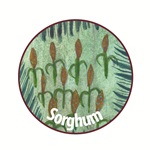Improving phosphorus efficiency in sorghum by the identification and validation of sorghum homologues for Pup1, a major QTL underlying phosphorus uptake in rice, and identification of other P efficiency QTLs (G7010.03.06)
| Target countries |
Kenya, Niger |
| Lead institute |
Empresa Brasileira de Pesquisa Agropecuária (EMBRAPA, Agricultural Research Corporation), Brazil |
| Partners |
|
Low productivity due to soil constraints and a lack of properly adapted crop cultivars is a serious problem in many parts of Africa, where sorghum is a staple food supporting millions of the rural poor. Pup1 is a major QTL located on rice chromosome 12 that underlies phosphorus (P) efficiency and has the potential to increase P acquisition efficiency in other cereals. Research findings from a long-term collaboration between IRRI and JIRCAS has resulted in the fine-mapping of the Pup1 locus to a ~150 Kb region on chr 12, and 2–4 high-quality Pup1 candidate genes have been identified.
Taking advantage of the complete sequence of the sorghum genome, this project seeks establish a framework based on comparative genomics to identify sorghum Pup1 homologues and will validate their role as bona fide genes underlying tolerance to P deficiency. The project further aims to lay the foundation for a molecular breeding programme targeting marginal soils in Niger and Kenya and other areas of Sub-Saharan Africa to improve food security and farmer income.
Objectives
The overall objective is to identify genes related to tolerance to P deficiency in sorghum, with a focus on Pup1 homologs in sorghum and the sorghum Al tolerance gene, AltSB, which will be transferred to the Sorghum Molecular Breeding (SorghumMB) project for deployment into breeding programmes. Specific objectives are:
- Identify homologs of rice Pup1 that are associated with traits related to P-deficiency tolerance in sorghum and also clarify the role of the AltSB gene in tolerance to low P.
- Validate genes associated with P deficiency tolerance in sorghum.


